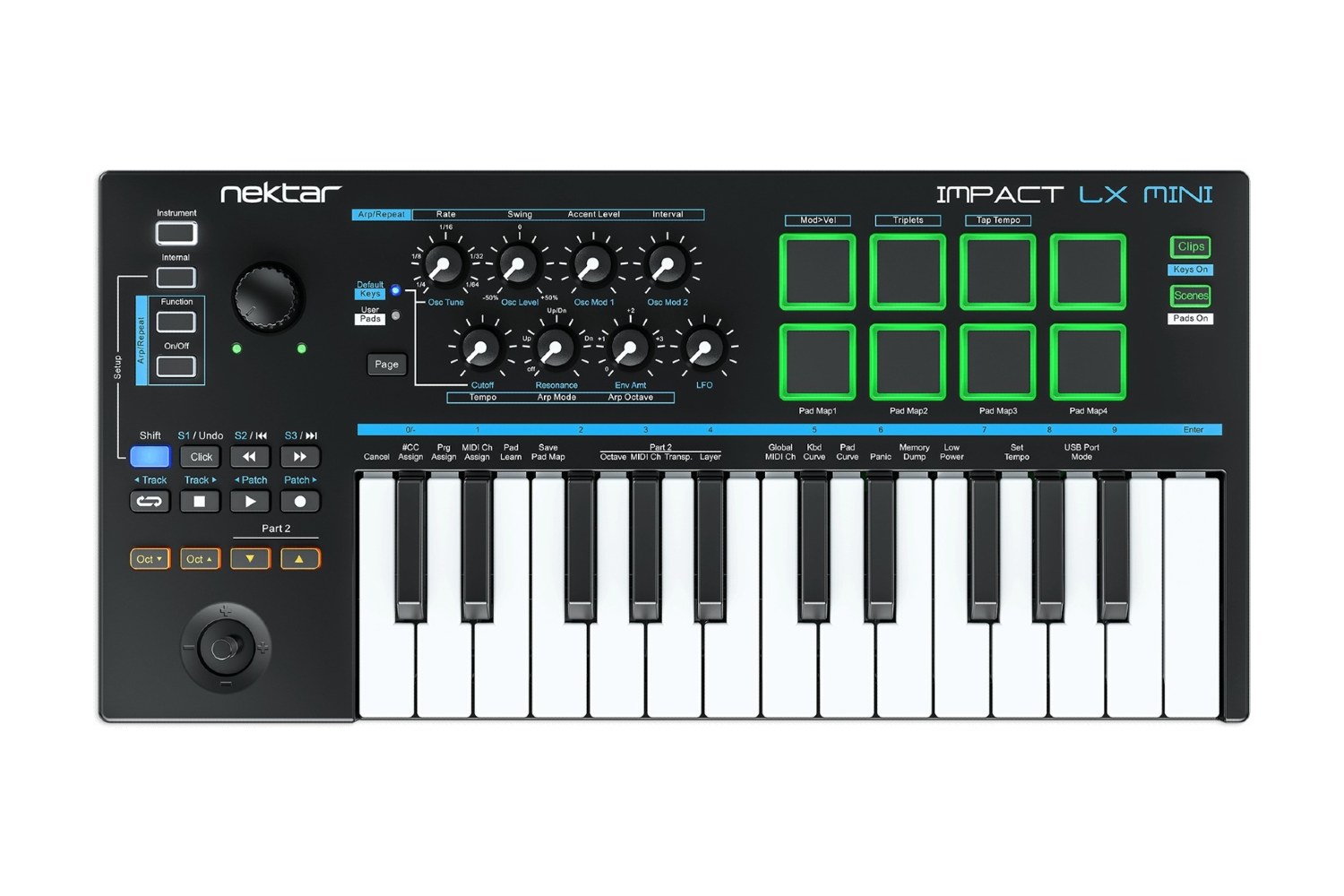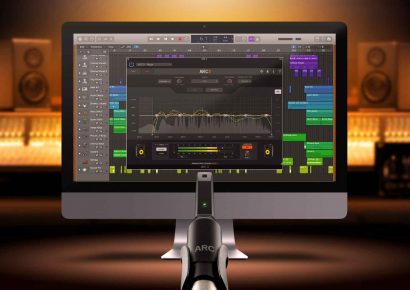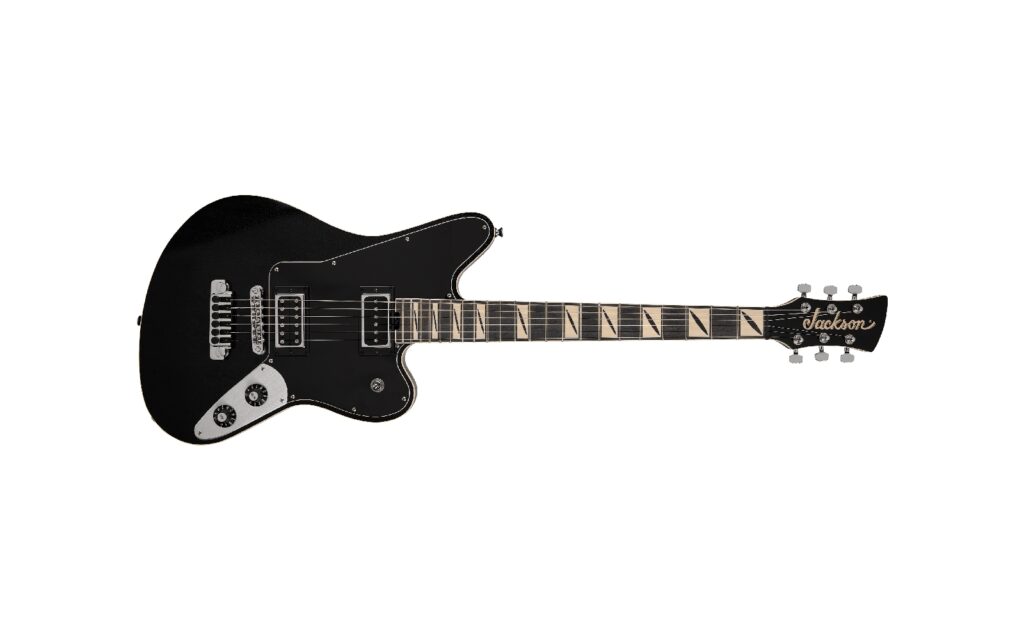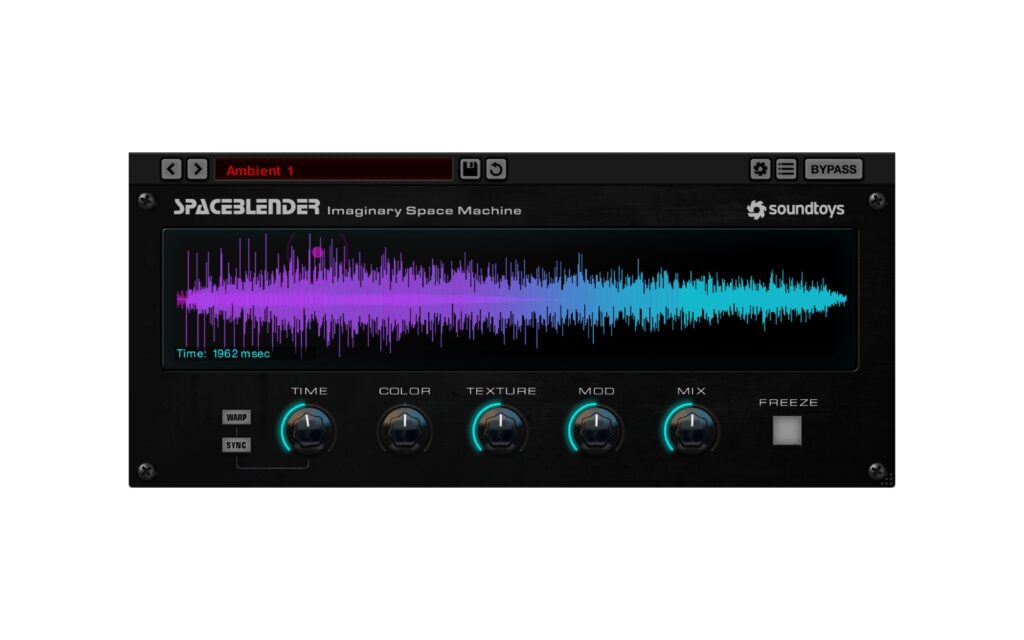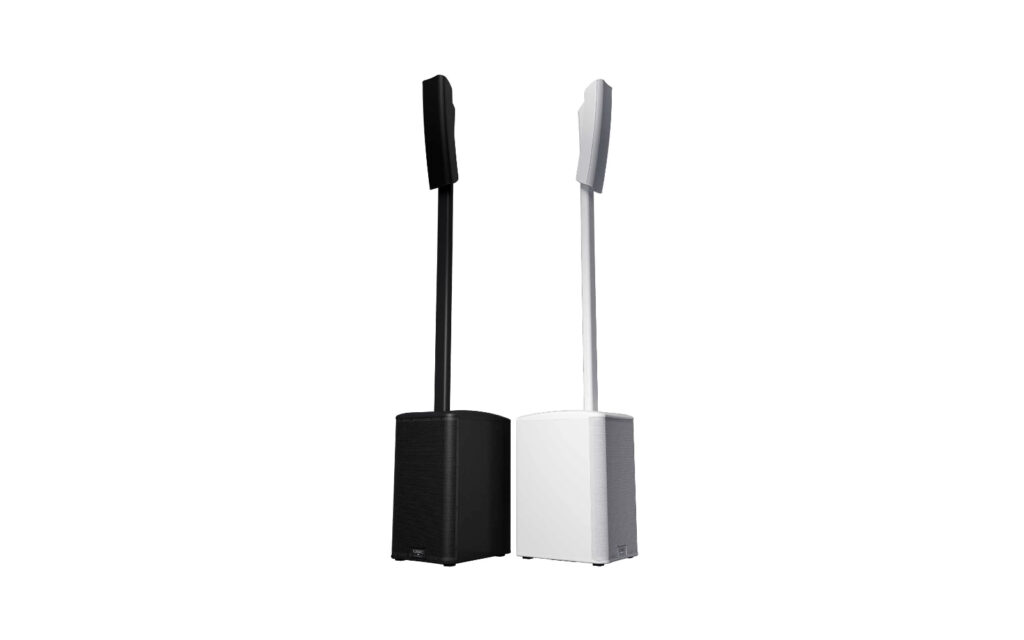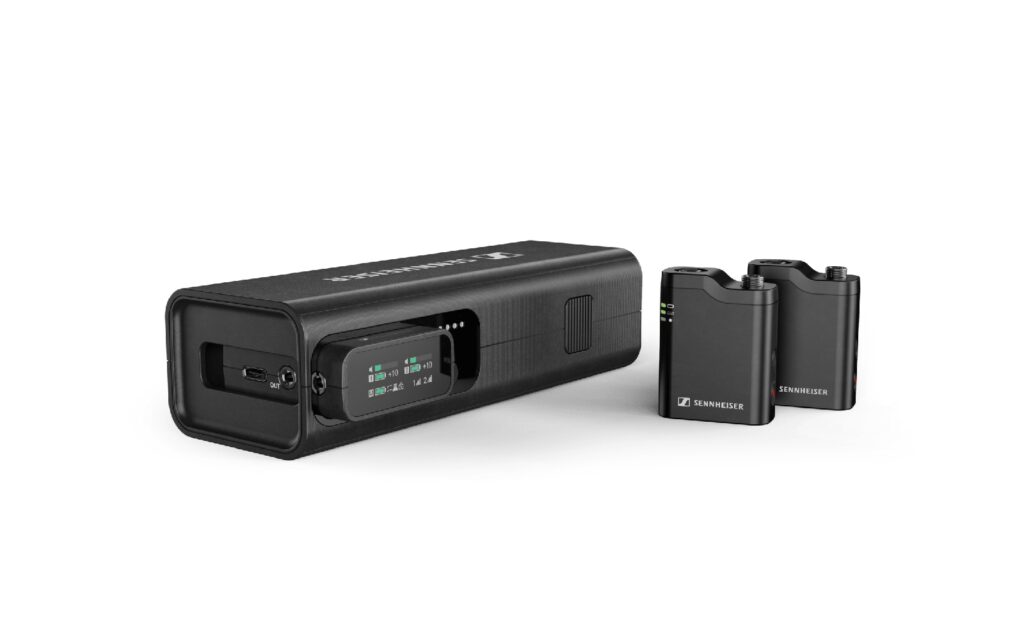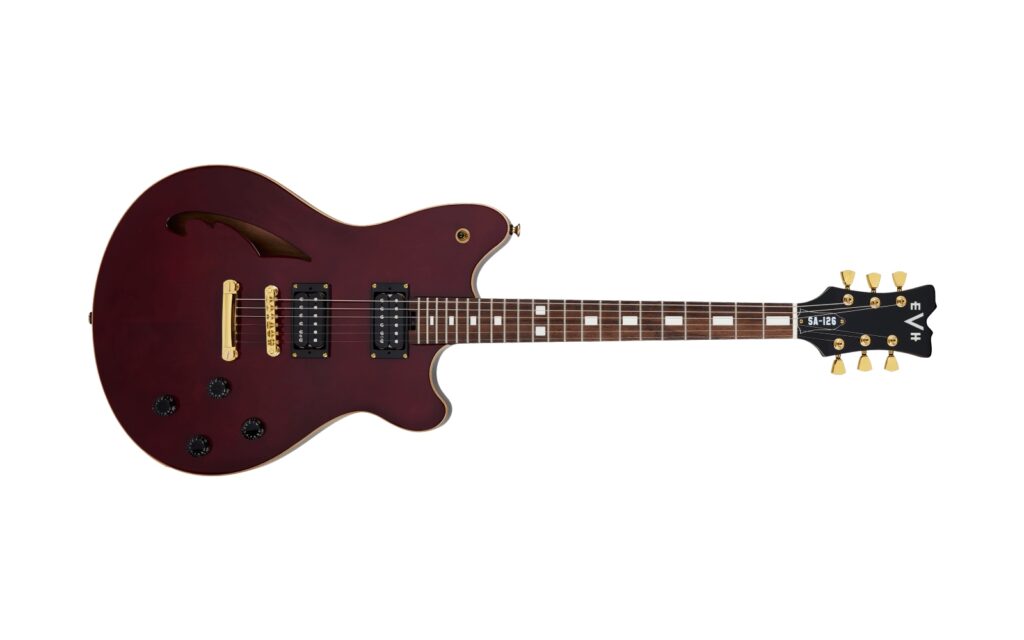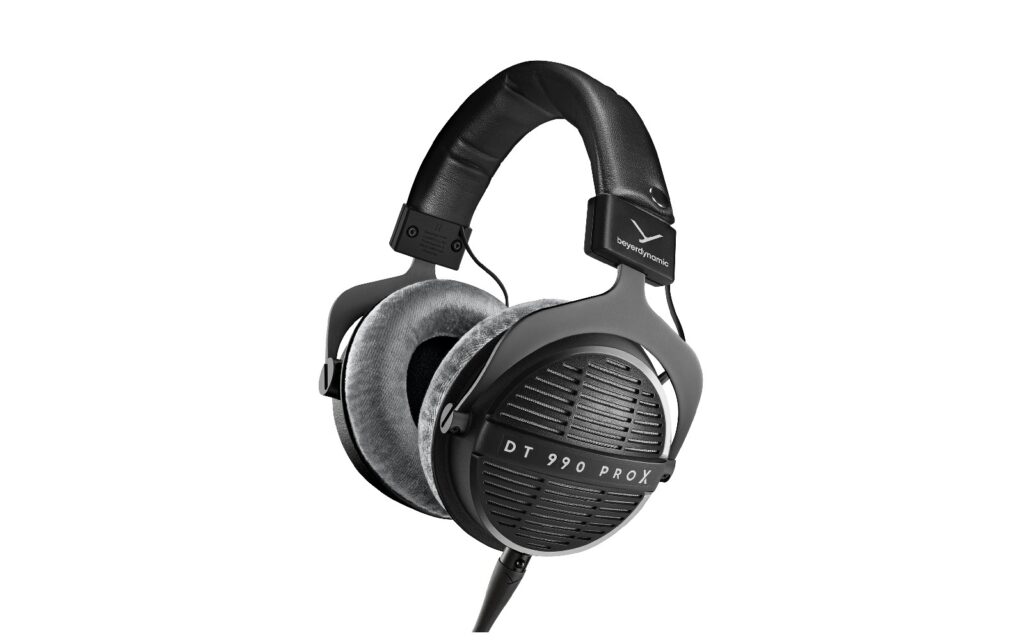Sound and Music | Price: $269.99
When I was approached to review the Nektar Impact LX Mini, I’m not going to lie, I was like, meh. Yet another backpack keyboard controller. At the risk of sounding cynical, I was thinking, “Let me guess, you can play drum pads, some transport controls, and the ability to launch clips in Ableton!” So, with some considerable surprise, I’m now looking to retire a couple of said keyboard controllers and embrace the new kid on the block. The question I’m sure you’re all asking is “why?” So, let’s dig deep and see what the Impact LX Mini offers.
Read more gear reviews here.
Nektar is an American-based company with a unique go-to-market strategy. From their website, Nektar’s aim is to, “Bridge the gap between powerful music software and controller hardware”. Don’t expect a host of software instruments and plugins that often shift with similar products. In addition to the keyboard controller and a driver installer, the only other inclusion is an eight-channel version of Bitwig Studio. The Nektar Impact LX Mini is a class-compliant USB device but if you are looking to use it with Ableton Live, the driver is required for both Windows and Mac OS X. In my testing, I used an M1 Mac and Ableton Live Suite 11, but support is provided for all of the major DAW players. (I’m very interested to check out the Avid Pro Tools integration but at the time of writing, am yet to do so).
Set up is relatively simple and the documentation is clear and concise. I tried to jump straight in, but didn’t get far. You definitely need to reference and read through and follow through the documents. It’s pretty simple so don’t worry too much. A Max for Live device offers further control functionality, but this is only compatible with Ableton Suite 11 with Max for Live installed. For full compatibility, check the product site.
The hardware build quality is great and the keys, featuring four velocity curves, feel responsive and provide an impressive dynamic range. Overall, the design aesthetic is utilitarian rather than minimalistic, with a good deal of printed text across the unit to help users navigate the controls on offer. Think workhorse, not show pony. Within the small form factor, Nektar has managed to jam in lots of controls: 25 keys, eight pads, nine encoders, one joystick for pitch bend and modulation, 19 dedicated control pads, and a sustain pedal port. Clever design allows Shift and Page buttons to provide multiple functions to these control pads, further expanding the available functionality. To understand the dizzying array of controls on offer, again, the manual is definitely essential. The actual keys are a little smaller than similar units, but I didn’t find this an issue during testing.
In use, the power of the Nektar Impact LX Mini quickly becomes evident. Transport, metronome, and looping controls are all available, but I was shocked to see that the unit provides functions lacking, even on Ableton’s Push, but more on that later. By tapping or holding the Shift button, each of the control buttons takes on two further functions. The actual function of each button, FFW, REW, PLAY etc. is printed on the unit. Standard functions are in white text and those accessed using the blue backlit Shift key, are in blue.
Go to Clip View and another to bring up the Browser. Once there, presets can be auditioned, and loaded. Nice! The large encoder provides volume control of the channel that is currently being selected and by holding the Shift button, the encoder controls the master volume. Arrow keys allow navigation across the Live Set to select individual channels. If you are using the Max for Live version with Live Suite 11, an option exists to auto enable record on the channel.
One strange and glaring omission in Ableton Live, and by extension Push, is dedicated fast forward and rewind buttons. For most uses this isn’t an issue, however, if you are editing a long looping section with more than one clip selected, you have to listen to the entire loop from start to finish, even if you’re just tweaking notes at the end of the loop. There’s no way of fast forwarding or rewinding without using the mouse to click into the interface and doing so will deselect the clips in the process. This may seem small, but it has been a constant frustration of many for a long time. This, paired with FFW and REW buttons, makes the unit very attractive. On the topic of looping, the Impact LX Mini allows you to set start and end points and turn looping mode on and off, all without needing to touch the mouse.
All of this barely scratches the surface of the functionality of Nektar Impact LX Mini. There is so much more on offer. The actual keys have secondary functions that can be accessed by holding one of the Part Two buttons. Doing so can change MIDI channels, layer an octave on top, or below, shift octaves up and down. The price is a little over $250 so it offers excellent value and adds significant workflow improvements. So, if you are in the market for a pint-sized powerhouse, it’s well worth a look.
Head to Nektar for more information. For local enquiries, reach out to Sound and Music.
